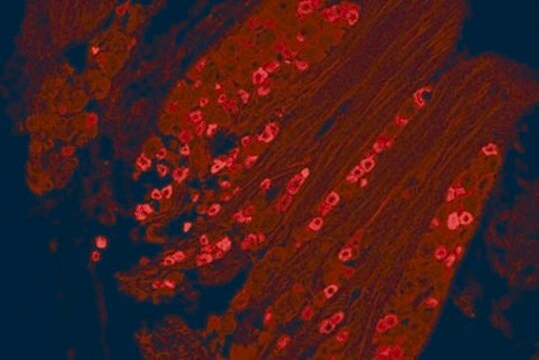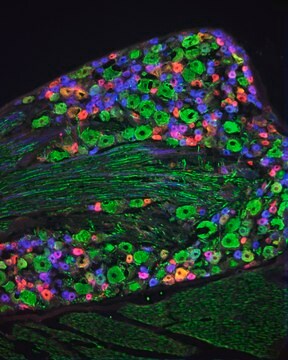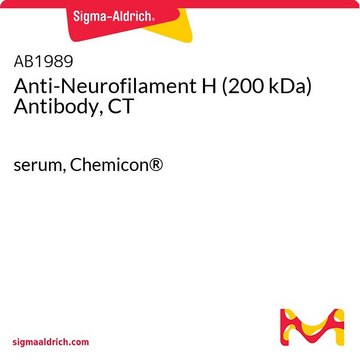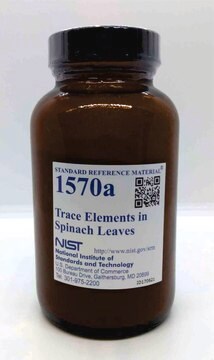MAB5262
Anti-Neurofilament H (200 kDa) Antibody
CHEMICON®, mouse monoclonal, RT97
Sinônimo(s):
Anti-CMT2CC, Anti-NFH
About This Item
Produtos recomendados
Nome do produto
Anti-Neurofilament 200 kDa Antibody, clone RT97, clone RT97, Chemicon®, from mouse
fonte biológica
mouse
Nível de qualidade
forma do anticorpo
purified immunoglobulin
tipo de produto de anticorpo
primary antibodies
clone
RT97, monoclonal
reatividade de espécies
mouse, human
reatividade da espécie (prevista por homologia)
rat
fabricante/nome comercial
Chemicon®
técnica(s)
immunohistochemistry (formalin-fixed, paraffin-embedded sections): suitable
western blot: suitable
Isotipo
IgG1
nº de adesão NCBI
nº de adesão UniProt
Condições de expedição
wet ice
modificação pós-traducional do alvo
unmodified
Informações sobre genes
human ... NEFH(4744)
mouse ... Nefh(380684)
rat ... Nefh(24587)
Descrição geral
Especificidade
Imunogênio
Aplicação
1-10 μg/mL
Immunohistochemistry(paraffin):
Representative images from a previous lot.
Optimal Staining With Citrate Buffer, pH 6.0, Epitope Retrieval: Human Cerebellum
Optimal working dilutions must be determined by end user.
Neuroscience
Neurofilament & Neuron Metabolism
Neuronal & Glial Markers
Qualidade
Western Blotting Analysis:
1:500 dilution of this antibody detected NEUROFILAMENT on 10 µg of Mouse brain membrane lysates.
Descrição-alvo
forma física
Armazenamento e estabilidade
Nota de análise
Brain
Cultured neurons
Outras notas
Informações legais
Exoneração de responsabilidade
Não está encontrando o produto certo?
Experimente o nosso Ferramenta de seleção de produtos.
recomendado
Código de classe de armazenamento
10 - Combustible liquids
Classe de risco de água (WGK)
WGK 2
Ponto de fulgor (°F)
Not applicable
Ponto de fulgor (°C)
Not applicable
Certificados de análise (COA)
Busque Certificados de análise (COA) digitando o Número do Lote do produto. Os números de lote e remessa podem ser encontrados no rótulo de um produto após a palavra “Lot” ou “Batch”.
Já possui este produto?
Encontre a documentação dos produtos que você adquiriu recentemente na biblioteca de documentos.
Nossa equipe de cientistas tem experiência em todas as áreas de pesquisa, incluindo Life Sciences, ciência de materiais, síntese química, cromatografia, química analítica e muitas outras.
Entre em contato com a assistência técnica







